Atopic Eczema in Babies, Toddlers and Children
Eczema is a dry skin condition that causes a red, itchy rash. It is called a ‘hypersensitivity’ condition as it is caused by the immune system being overly keen and mounting a reaction to something harmless. It runs in families. People who have eczema may also have asthma and hayfever as they are caused by a similar mechanism.
Atopic eczema affects 5-10 % of all children and normally starts in the first 2 years of life, commonly at 3 months. It is unusual before 2 months of age when seborrhoeic dermatitis is common. Generally eczema gets better over time, but not all children grow out of it.
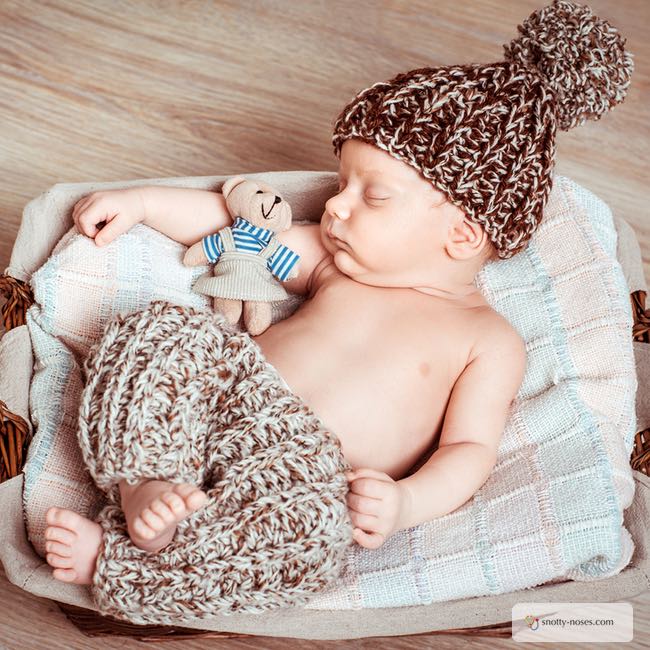
Eczema Symptoms
The symptoms of eczema are dry, red itchy skin. In babies it is normally seen on the face and limbs. As the child gets older it can be seen on the extensor surfaces, that is the outside bit of your knees and elbows. Older children tend to have it on the flexor surfaces, the inside bits of your elbows and knees.
Eczema can be triggered by various things including getting hot and sweaty, irritants such as clothing or washing powder, environmental factors such as pets, or other allergens such as certain foods or metals (e.g.nickel).
- Dry, red, itchy skin.
- small bumps
- Fluid filled blisters
Eczema in Babies
- Red itchy rash often on face and limbs.
- Small bumps on cheeks, forehead or scalp.
Eczema in Toddlers
Toddlers generally have a red itchy rash on the outside of their elbows and knees.
- Babies face and limbs.
- Toddlers and young children on outside of knees and elbows
- Older children on insides of knees and elbows.
Eczema in Babies and Toddlers
Eczema is very common in children. 1 in 10 children develop eczema. Normally it starts as a baby, in the first few months of life and almost always before they are 5.
Many children grow out of eczema by the time they are teenagers.
Atopic Dermatitis in Children
Atopic dermatitis is the most common cause of eczema in children. “Atopic” is a form of allergy. It is when your body mounts its immune system against something that isn’t really a danger. Atopic reactions are a family of reactions that are mediated by an antibody (the thing that fights the infection) called “immunoglobulin E” or IgE for short. Other illness that are “atopic” include asthma and hay fever.
Atopy runs in families and some children have all three illnesses.
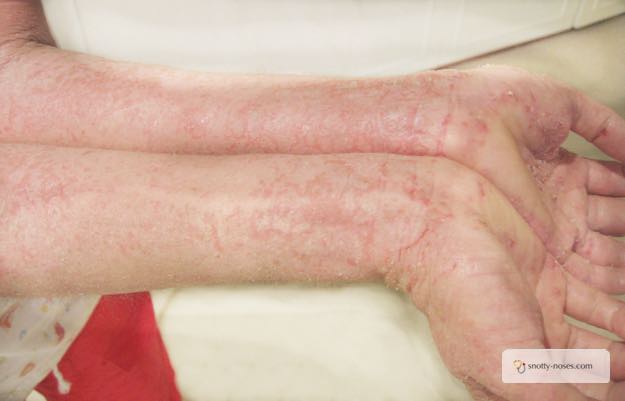
How to Treat Eczema in Children
- Avoid Eczema Triggers
- Emollients (moisturisers) and soap substitute
- Steroid Creams and other treatments
Avoid Eczema Triggers
Treating eczema starts with avoiding the things that cause it (which may be easier said than done if you don’t know what exacerbates it). The list of things that can trigger eczema is very long and includes pollen, dust, animals, weather conditions (such as being very cold or very hot), sweating, smoke, some foods, some fabrics. It can be really difficult to know what triggers your child’s eczema.
Cut your child’s nails short and file the edges so that they can’t itch it and make it worse.
Use cotton clothes and non-biological washing powder.
Avoid fabric conditioners.
Emollients for Eczema
Applied treatments for eczema start with un-perfumed emollients that moisturise the skin. There are many of these and they can be applied in different ways, directly to the skin, in the bath or as soap substitute. Many of them are available over the counter, but some require a prescription.
It is a matter of working your way through the list to see which suits your child. Be aware that some emollients contain lanolin which normally helps eczema but paradoxically some people are allergic to it and it can make eczema worse.
The emollient should be applied in large amounts to the whole body, even when the eczema is clear.
They should be used instead of soap and shampoo in children under the age of 12 months. You need to keep on using the emollient even if your GP has given you other treatments as well.
Medications for Eczema
If all of the above hasn’t worked, it probably means that your child will need some steroid cream which can be prescribed by your GP. Some people worry that giving steroids will be bad for their children but it is important to remember that the benefits of steroids outweigh the risks if they are used properly.
Other treatments are also available for severe eczema.
Eczema Herpeticum and Infected Eczema
Eczema can get infected with bacteria or herpes virus (eczema herperticum). If your child’s eczema has got worse and seems very red or oozing fluid, or crusty, or if your child has a high temperature or is vomiting, you must seek medical advice.
The symptoms of eczema herperticum are areas of rapidly worsening, painful eczema, clustered blisters and areas that look a bit like ulcers. Your child may also have a fever, be lethargic or distressed.
Symptoms of Infected Eczema and Eczema Herpeticum
- Fever
- Very red or oozing rash
- Vomiting
- Painful, clustered blisters
- Ulcers
- Unwell Child
Summary of Childhood Eczema
In summary, eczema is a very common rash in childhood. Normally children have mild eczema but some have severe eczema. Treatments for mild eczema include, avoiding the triggers, generous amounts of moisturisers and steroid creams. It is important to know about the risk of infected eczema and eczema herpeticum and to seek medical attention if you are concerned.
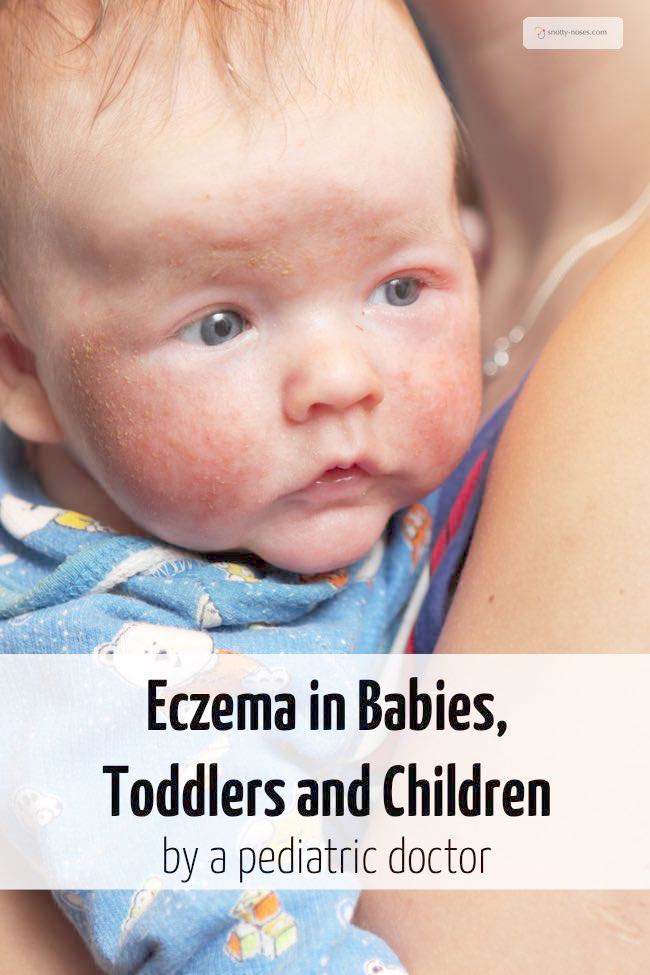
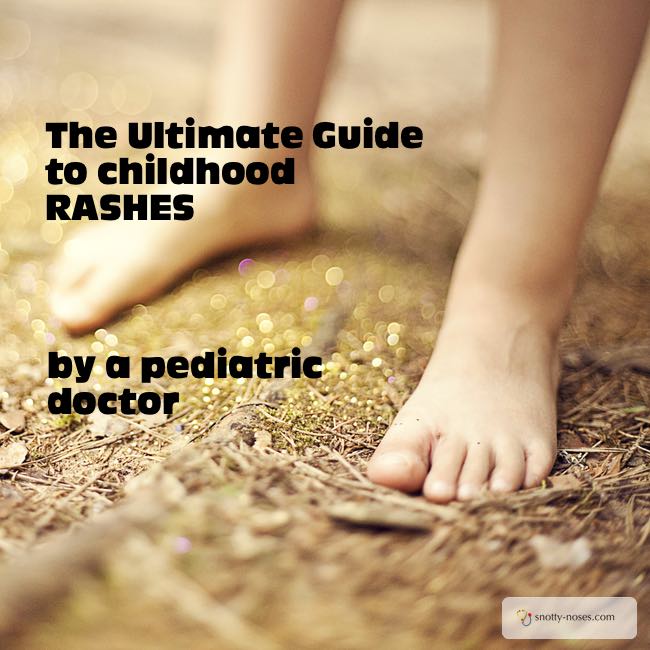
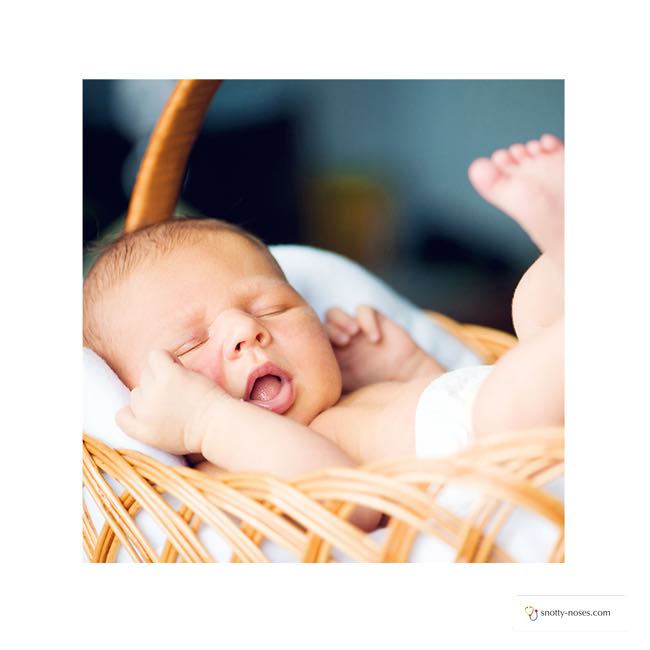
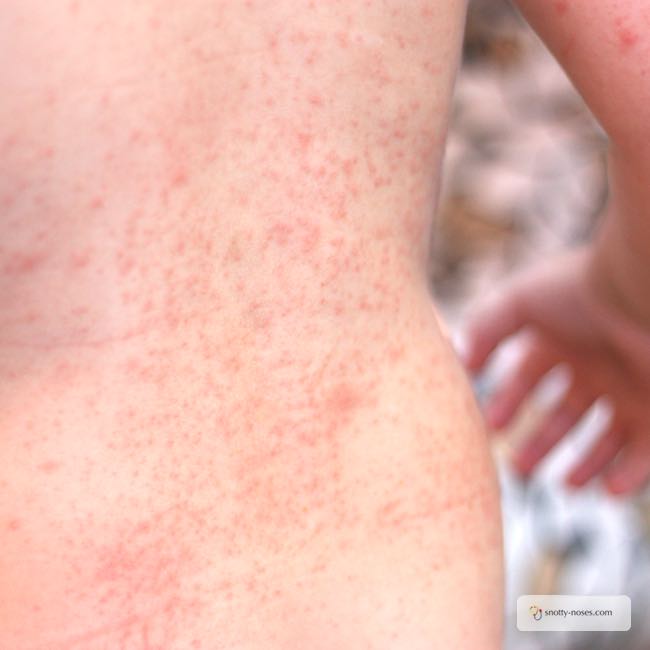
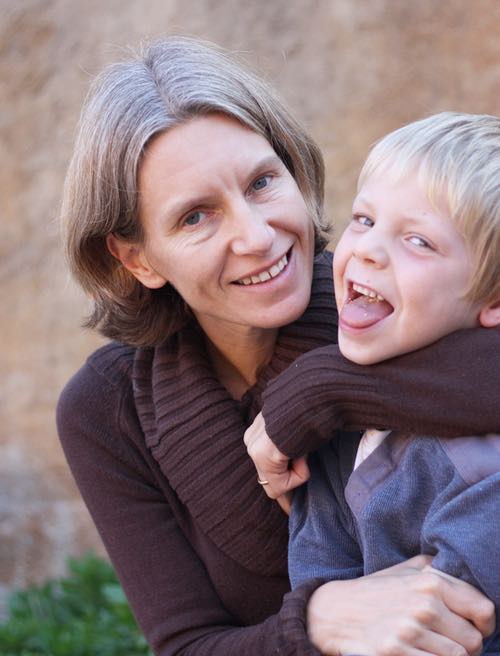
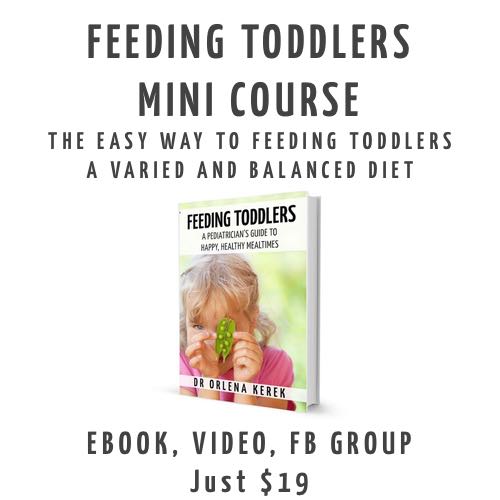 Feeding Toddlers.
Feeding Toddlers.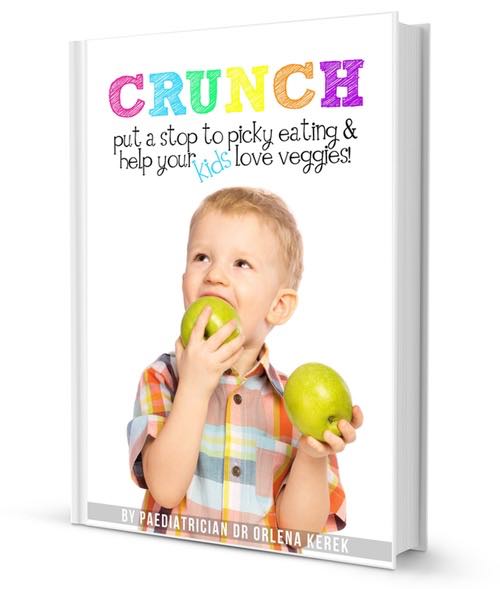 Would you like your kids to eat more healthily? Check out the book!
Would you like your kids to eat more healthily? Check out the book!